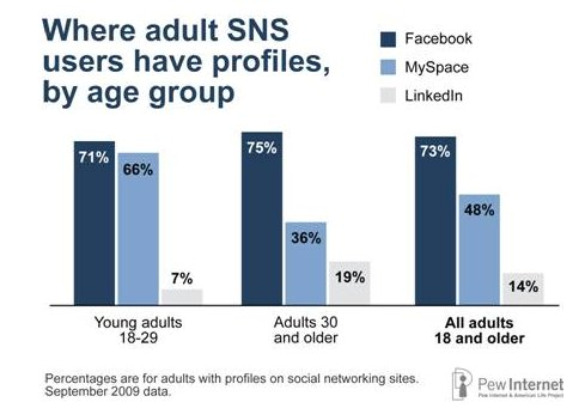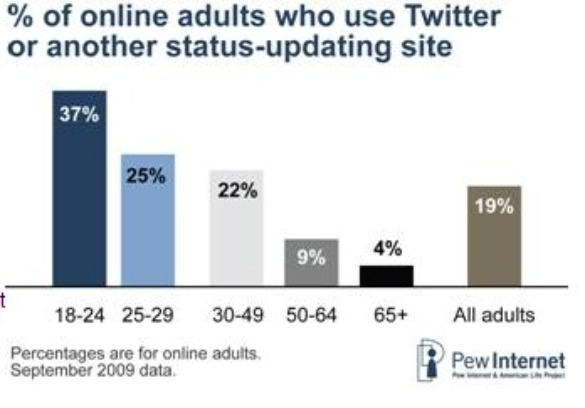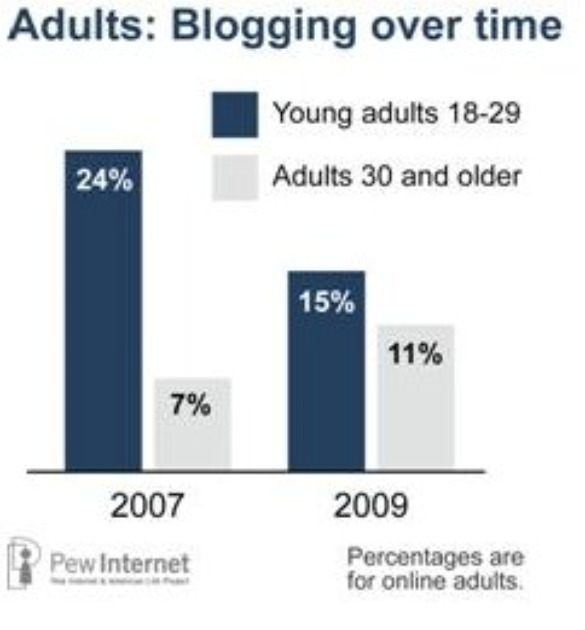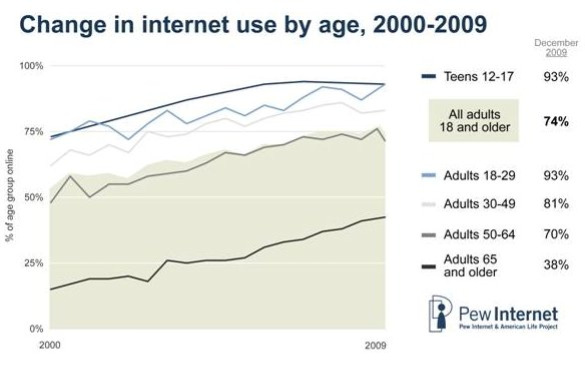Social networking has risen among all age groups in the past few years, particularly among teens and younger adults, according to research from the Pew Internet & American Life Project.
Pew research indicates that in 2009, 73% of online teens used social networking sites in 2009, compared to 47% of online adults. Breaking down online adults into older and younger demographics, 72% of adults 18-29 use social networking sites, compared to 40% of their counterparts 30 and older.
Facebook is Tops with All Adults
Social networking adults in all age brackets favor Facebook by a wide margin, with older adults preferring it slightly more. Seventy-three percent of all adults 18 and older who use social networking sites have a Facebook account. Broken down by age demographic, this includes 71% of adults 18-29 and 75% of adults 30 and older.
In contrast, 48% of all adult social network site users have a MySpace account. The younger generation is much more apt to use MySpace, with 66% of social networking adults 18-29 having a MySpace account, but only 36% of the 30 and older bracket. Usage rates for the professional networking site LinkedIn are the reverse of MySpace. Fourteen percent of all adult social networking site users have a LinkedIn account, which breaks down to 7% of adults 18-29 and 19% of adults 30 and older.
Younger Adults More Apt to Tweet
Tiwtter and other status-updating sites are more popular with younger adults than older adults. Thirty-seven percent of online adults 18-29 use Twitter or another status-updating site, compared to 9% of 50- to 64-year-olds and only 4% of online adults 65 and older. The overall Twitter/status-updating site usage rate among all adults is 19%.
Older Adults Blog More
Blogging is becoming more popular with older adults and less popular with younger adults.
While blogging among adults as a whole has remained steady, the prevalence of blogging within specific age groups has changed dramatically in recent years. Specifically, a sharp decline in blogging by young adults has been tempered by a corresponding increase in blogging among older adults.
- In December 2007, 24% of online 18-29-year-olds reported blogging, compared with 7% of those ages 30 and older.
- By 2009, just 15% of internet users ages 18-29 maintained a blog, a nine-percentage-point drop in two years. However, 11% of internet users ages 30 and older maintained a personal blog.
Almost Everyone Under 30 is Online
Seventy-four percent of all adults 18 and older go online. This percentage climbs to 93% for both 12-to-17-year olds and 18-to-29-year-olds. Even among adults 65 and older, the least likely age demographic to use the internet, 38% of the population is online.
Other Findings
- Eighty-one percent of adults between the ages of 18 and 29 are wireless internet users. By comparison, 63% of 30-49-year-olds and 34% of those ages 50 and older access the internet wirelessly.
- Roughly half of 18-29 year-olds have accessed the internet wirelessly on a laptop (55%) or on a cell phone (55%), and about one quarter of 18-29 year-olds (28%) have accessed the internet wirelessly on another device such as an e-book reader or gaming device.
- Three-quarters (75%) of teens, 93% of adults ages 18-29, and 58% of 12-year-olds now have a cell phone.
- Eight percent of internet users ages 12-17 use Twitter. This makes Twitter far less common than sending or receiving text messages — as 66% of teens do — or going online for news and political information, done by 62% of online teens.
Global Time Spent Social Networking Rises
In December 2008, global consumers spent an average of three hours, three minutes and 54 seconds on social networking sites, according to The Nielsen Company. That amount of time increased to five hours, 35 minutes and five seconds one year later. In addition, unique audience increased 27%, from 242 million in December 2008 to 307.4 million in December 2009.
The same Nielsen study revealed that Facebook dramatically increased its dominance of the US online social networking market between December 2008 and December 2009. In December 2009, Facebook recorded about 110 million unique visitors, a 100% increase from 55 million unique visitors in December 2008. MySpace, which remained the second-most popular US online social network, saw its number of unique visitors drop about 17%, from roughly 60 million in December 2008 to roughly 50 million in December 2009. While Twitter only recorded 18.1 million unique visitors in December 2009, this represented 579% growth from 2.7 million unique visitors a year earlier.




























Leave a Comment